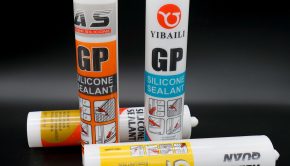Choosing the Right Synthetic Rubber for Your Project
Rubber can be called revolutionary material. Starting as sap from the Hevea brasiliensis tree, rubber latex can be processed into all types of products that have made modern life possible. But referring to rubber as though it were a single substance is a bit of a misnomer. It is, in fact, a range of different natural and synthetic materials with unique properties. Learning what they are, their advantages, and in what circumstances they best perform can help you save time in choosing the best option for your next project.
As an example, when you need to buy rubber washers for sealing applications, you’ll actually get better performance from neoprene washers or EPDM washers instead of washers made from natural rubber. Even though these different types are simply called rubber flat washers by many suppliers, they will perform differently in different settings. There is no one-size-fits-all rubber that’s perfect for any job, but the following synthetics are common and reliable options when a flexible material is needed.
Neoprene
Neoprene, like most synthetic rubbers. is actually a polymer. The main advantages of this material are its inertness, which means it will not leach into most substances, and its pliability. This makes it an excellent and versatile insulator in many applications, even those that might be subject to temperatures near 500 degrees F. Neoprene will also insulate the flow of electricity in a similar way to natural rubber.
Depending on whether the neoprene is open-cell or closed-cell, it will offer different properties. Open-cell neoprene is more flexible and breathable. Though it is not watertight, it provides excellent insulation thermal properties. Closed-cell neoprene is less flexible but it is waterproof. This makes it a great option when a resistant membrane-like layer is needed between parts and surfaces.
Silicone
Silicone can refer to a broad range of siloxane polymers that come in the form of oil, resin, and caulk, but as synthetic rubber, it’s a solid, though highly flexible, elastomer. It’s one of the most resistant types of natural rubber alternatives that’s also very versatile and affordable.
Silicone rubber will retain its stability in many extreme temperature applications, including in environments where temperatures may get as cold as -70 degrees F or as hot as 570 degrees F. Like neoprene it is generally non-reactive and can come into contact with a broad range of substances without leaching. Silicone is mostly non-porous and will reliably seal the flow of liquids. It is effective for insulating electricity and heat. Silicone is also used as a direct replacement for natural rubber in applications where better resistance to ozone, UV rays, and low moisture is needed, however, it is more permeable to certain gases compared to other types of synthetic rubber.
EPDM
EPDM, or ethylene propylene diene monomer, is an elastomer that’s used where a tough alternative to rubber is needed, particularly in settings where heat, UV rays, and ozone would degrade other synthetics and natural rubber. It will retain its stability through temperatures that reach 300 degrees F and is impermeable to most gases and liquids. EPDM is used in many structural and hardware applications that need sealing, weatherproofing, and insulation without any maintenance requirements.
Nitrile
Nitrile is a synthetic rubber that is often used as an alternative to natural rubber latex where thin and strong sealing is needed. It is also more resistant to oils, acids, and punctures than natural latex. Nitrile is used in applications that include non-latex disposal gloves, as well as gaskets and sealing hardware that must be resistant to oil and various chemicals. Nitrile is also sometimes used as synthetic leather.
Butyl
Butyl rubber is a tough synthetic that can be made to a variety of thicknesses and densities. It is highly enduring and used for many sealing purposes, including for the inner lining of tires, as stoppers and corks, in sporting equipment, and as a more enduring alternative to foam and damping compounds. Butyl is very flexible and exhibits excellent tensile strength.













